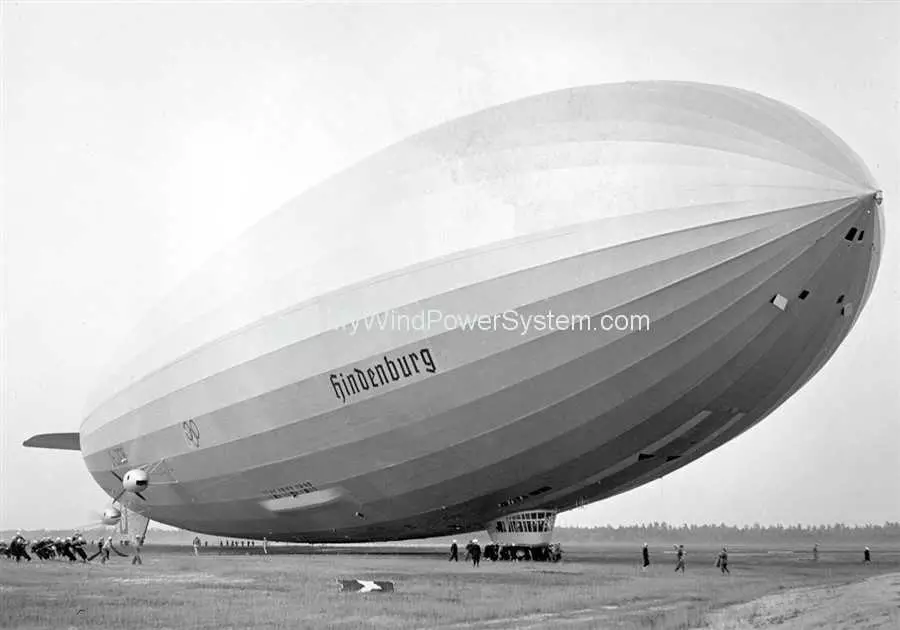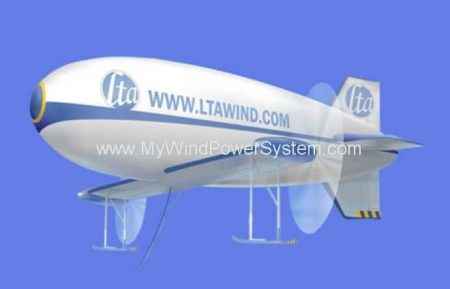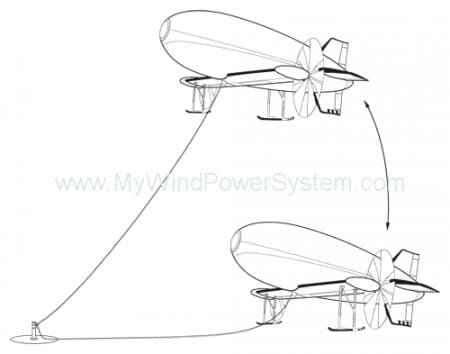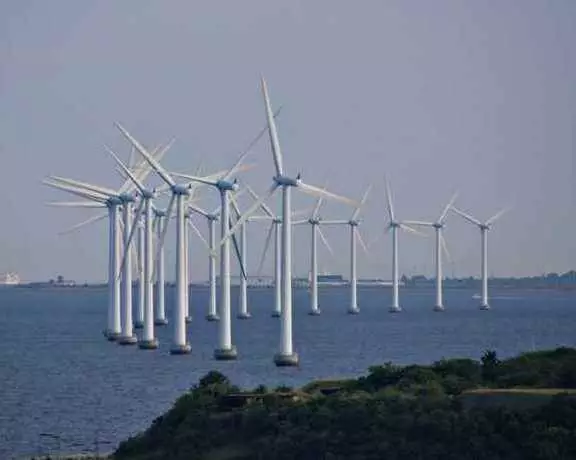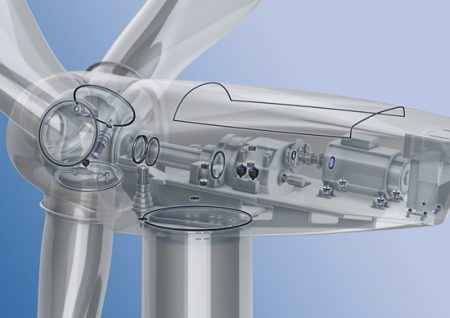In Ontario, Canada, the company “LTA Windpower is developing a revolutionary type of wind turbine. In fact, it’s not really correct to describe it as a turbine at all. It’s more like a blimp with two spinning propellers. It’s called the PowerShip. oh, and it’s filled with hydrogen gas. Yep, the one that’s very inflammable and caused the destruction of the German airship Hindenburg.
Company founder and CEO Nykolai Bilaniuk acknowledges that using hydrogen, (which is more flammable than the helium which is used in most blimps and balloons today) “is potentially dangerous.” However, he added, “we have to decide what would be sufficient to mitigate the risk.”
That risk is mitigated using a specially designed outer envelope surrounding the hydrogen to act as a barrier and avoid any risk of the gas from igniting. Hydrogen is also cheaper than helium and can be created on-site by electrolyzing water using electrical output created from the power generated by the PowerShip.
It’s well established that wind speeds are more powerful and more constant the higher up in the air you go. That’s why many conventional wind turbines are placed in high, remote, and inhospitable places- to harvest the maximum amount of energy.
The construction of the PowerShip begins with a non-rigid airship. The usual “gondola” slung underneath conventional blimps is replaced by airplane-like wings. There are two generator nacelles, one on each wing, at the end of the wings. The propellers face the rear and are on the trailing edge of the wings. The tether is attached to the front center of the wing beneath the blimp.
Because of the PowerShip’s natural buoyancy, there is no need for a winch on the ground to deploy or retrieve the PowerShip. They will vary in size. Units up to 50 kW (meant primarily for off-grid use) will employ non-grid-synchronous permanent magnet generators, storage batteries, and inverters, while larger grid-connectable units may use AC synchronous generators and blade-pitch adjustment.
Commercial implementation of the Power Ship may be some years away, but it’s possible that all of these technologies that make up the structure may eventually find a place in the growing wind turbine landscape. If the concept of flying wind turbines fulfills its promise, by the end of the decade innovators may transform this big idea into reality.

